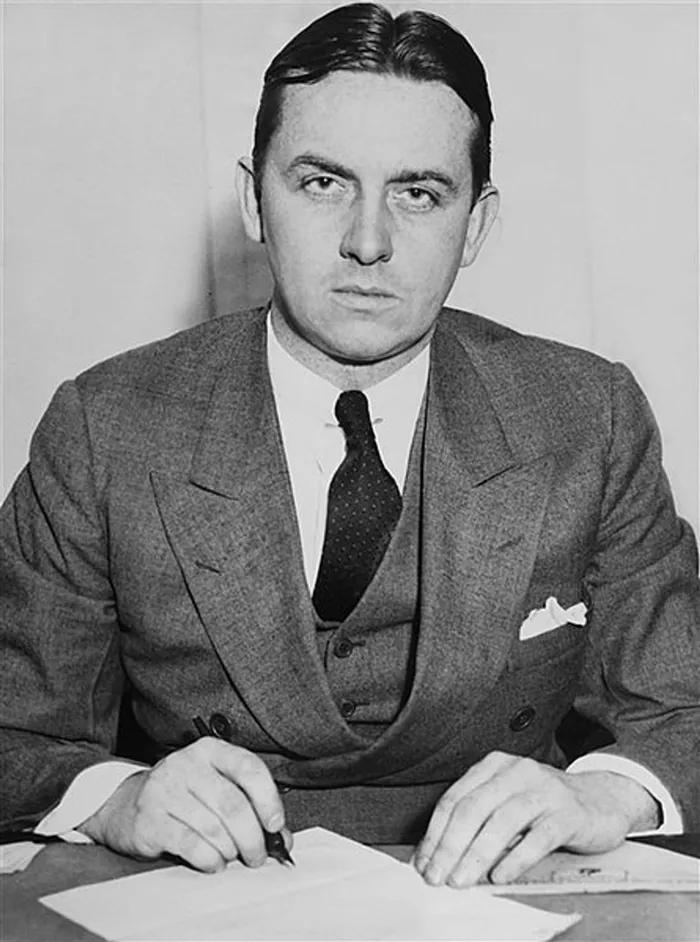Celebrating the honest cop

A 1931 photograph of Eliot Ness, an honest cop whose legend of being Untouchable has been fed by Hollywood.
Samantha Drake
Eliot Ness is a 20th-century law enforcement legend. Most people know him as the incorruptible crime fighter who brought down Chicago gangster Al “Scarface” Capone during Prohibition in the early 1930s. Ness was immortalised in a book, television series and movie, all titled The Untouchables.
His name graces the atrium of the US Justice Department’s Bureau of Alcohol, Tobacco, Firearms and Explosives (ATF) headquarters in Washington, DC. There's even a craft beer named after him: Eliot Ness Amber Lager out of Cleveland.
The Ness legend is largely fiction, however. He was never an FBI agent, as many people believed; he worked for the Bureau of Prohibition, the forerunner of the ATF, tasked with stopping the sale and consumption of alcohol between 1920 and 1933. Ness also rarely carried a gun.
“Eliot Ness was involved in trying to disrupt the flow of beer and look for evidence of bootlegging but never found enough evidence to build a strong case against Capone on those charges,” Jonathan Eig, the author of Get Capone: The Secret Plot That Captured America’s Most Wanted Gangster, told me.
Instead, Capone was sent to prison for tax evasion. “Ness was one of the smaller players, to be honest, in building the case against Capone.” But a story about the Internal Revenue Service accountants who gathered evidence against Capone would be pretty boring, he notes.
Next month’s Eliot Ness Fest festival in Coudersport, Pennsylvania, is doing its part to reconcile Ness the larger-than-life lawman and the real-life federal agent with integrity who still serves as a role model. One part of his legend is true: Ness and his team did earn the nickname “The Untouchables” because they couldn’t be bribed, unlike many other contemporaries.
The festival acknowledges the entertaining Hollywood fiction while putting Ness’s achievements in historical context.
Stephen Green, the event organiser and the president and CEO of the Eliot Ness Museum, calls it “an opportunity to relive one of the most glamorous and violent periods of the country's past”.
Ness lived in Coudersport only for about the last year of his life, but is the birthplace of his “Untouchable” legend.
Before he died of a heart attack in 1957 at the age of 54, Ness met writer Oscar Fraley multiple times, talked about Ness’s crime-fighting days and made plans to write a book about his experiences.
The lawman had resisted sharing his story, but he was deeply in debt and needed the money the book would bring in, says Brad Schwartz, the co-author with Max Allan Collins of Scarface and the Untouchable: Al Capone, Eliot Ness, and the Battle for Chicago and Eliot Ness and the Mad Butcher: Hunting America’s Deadliest Unidentified Serial Killer at the Dawn of Modern Criminology.
Ness didn’t approve of the exaggerations in Fraley’s draft, but he’s nevertheless credited as a co-author of the resulting book when it was published soon after his death. These days, many people who know his backstory agree that The Untouchables is a highly embellished tale of Ness’s part in bringing Capone to justice.
The book spawned a television series starring Robert Stack that ran from 1959 to 1963 and the 1987 movie starring Kevin Costner. The book, series and movie cemented Ness’s image as a tough-talking, gun-toting federal agent, much to the annoyance of some who knew the true story of Capone’s downfall.
“There were plenty of people who were still alive who remembered the real history and knew Eliot Ness had nothing to do with it,” Schwartz said. Getting Capone was a team effort by the Prohibition Bureau, the Treasury Department and the Bureau of Investigation, the agency that became the FBI.
“What’s been lost in the fight is all of the work he did to modernise, to professionalise and to reform law enforcement,” Schwartz said. Ness’s work on the Capone case was before its time in trying to make law enforcement less brutal and corrupt. It also laid the foundation for the Racketeer Influenced and Corrupt Organisations Act to prosecute organised-crime figures.
Ness didn’t resurface in the media again until 2014, when three US senators proposed naming the ATF headquarters in Washington, DC, after Ness. This revived the debate over what Ness did and didn’t do in the Capone case. Ultimately, ATF named its headquarters after Ariel Rios, the first ATF agent killed in the line of duty after the ATF became an independent bureau.
In recent years, ATF has been instrumental in setting the record straight on its most famous agent and celebrating his achievements. The bureau named the atrium after Ness when the building opened in 2008. A portrait of Ness created from a collage of ATF agents’ photos is on display.
“Clearly, there's a mythology that’s built around Eliot Ness,” said ATF associate deputy director and chief operating officer Thomas Chittum. “That’s not lost on any of us.”
“Ness is also a symbol of ethical law enforcement. In an era where there are a lot of questions about the legitimacy and credibility of law enforcement, I think it’s worth celebrating the honest cop.” - The Washington Post
The Independent on Saturday
Related Topics: